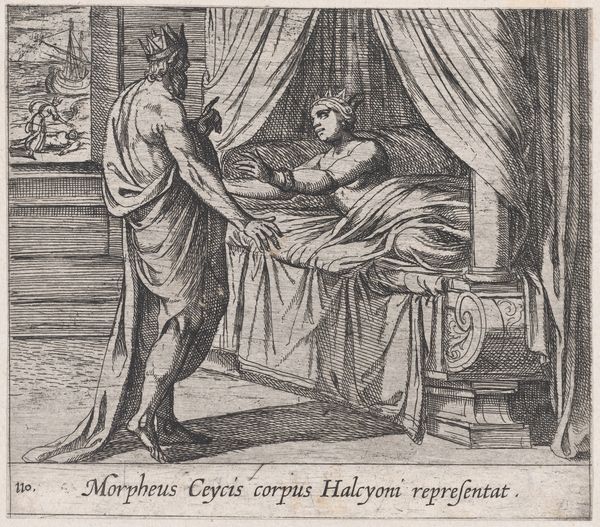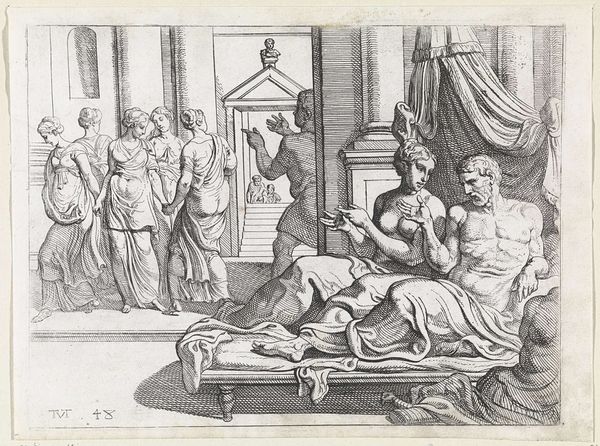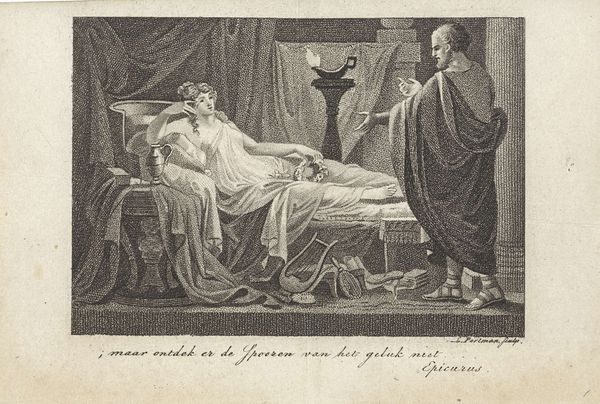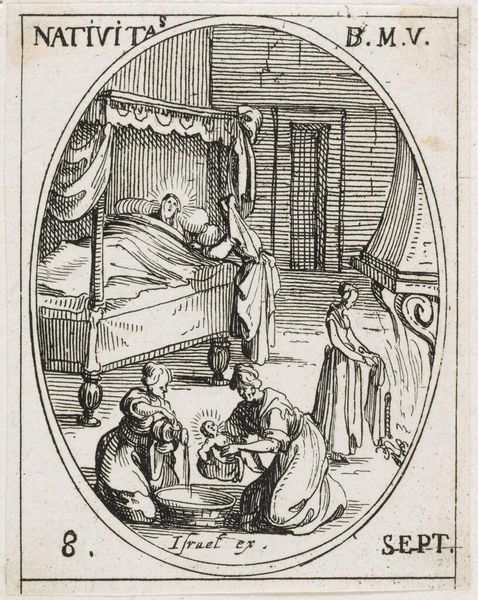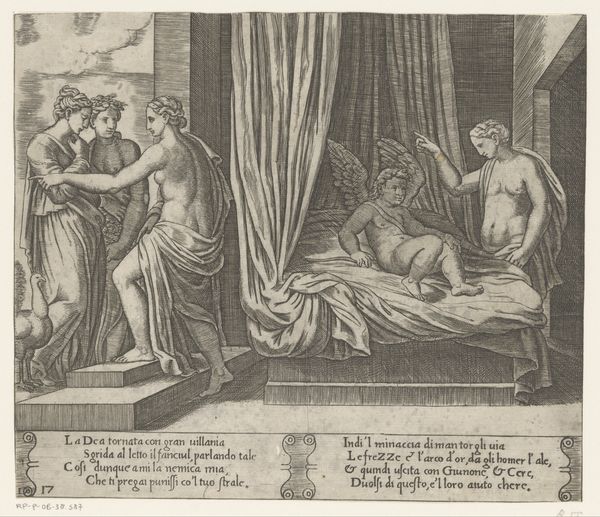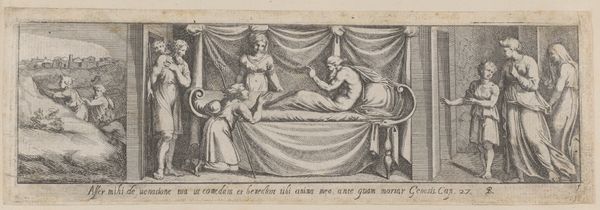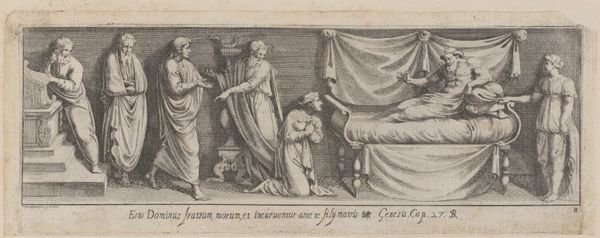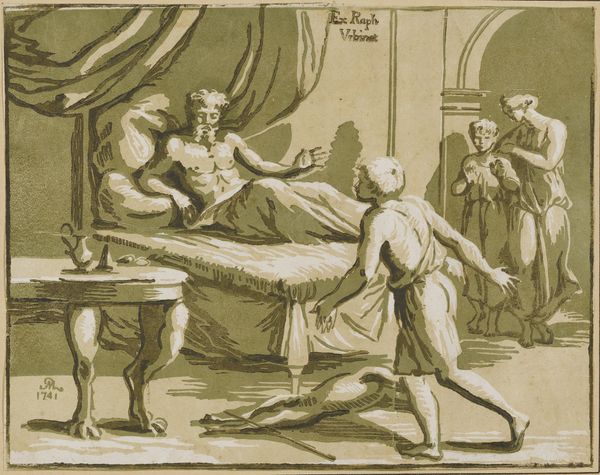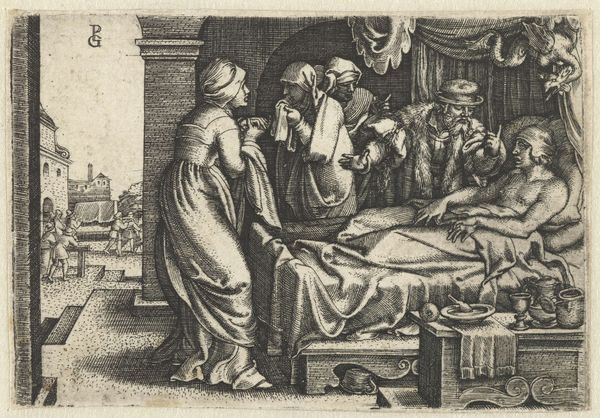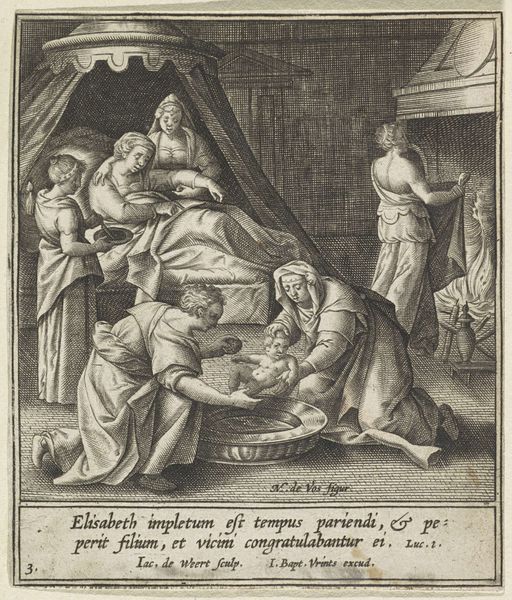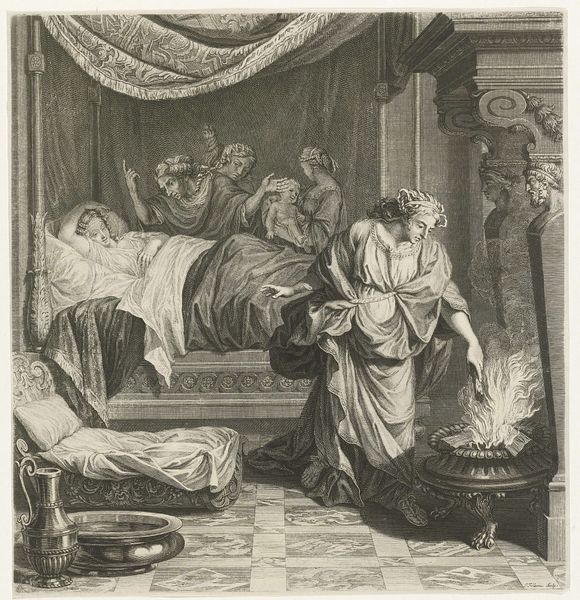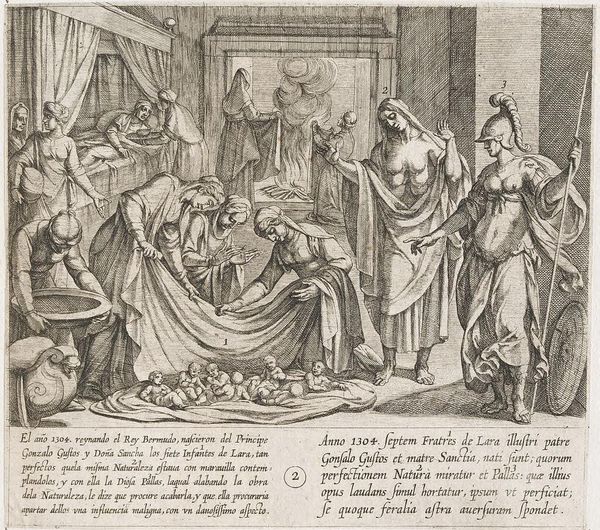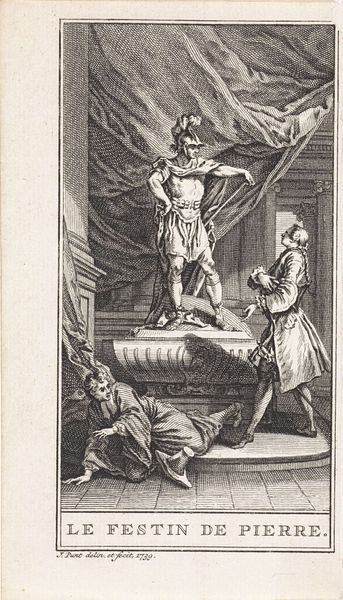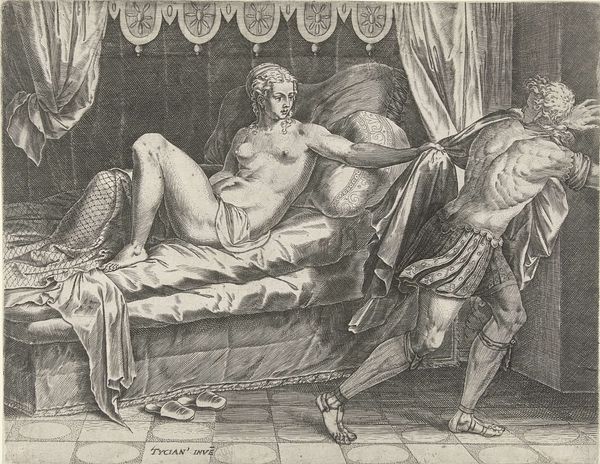
Dimensions: 10.5 x 12 cm (4 1/8 x 4 3/4 in.)
Copyright: CC0 1.0
Editor: This is Antonio Tempesta's "Morpheus, as Ceyx, Appearing to Alcyone," a small etching from around the early 17th century. It's quite dramatic. What do you see in this piece in terms of its historical relevance? Curator: Well, consider the context. Printmaking at this time served a vital public function. It disseminated stories, especially classical myths, making them accessible to a broader audience. How does Tempesta use the visual language of his time to depict this particular myth? Editor: I notice the figures are very theatrical, almost like actors on a stage. Was this common in art meant for public consumption? Curator: Precisely. The exaggerated gestures and idealized forms were part of a shared visual vocabulary. The image then becomes not just a representation of a story, but a social object, reinforcing certain cultural values and understandings of the classical world. It's interesting to note how the political powers of the time used and controlled the messages distributed through these images. Editor: That makes me think about how images today also reflect and shape cultural values. Thanks for that insight. Curator: Indeed, these images offer a lens into the public role of art then and now.
Comments
No comments
Be the first to comment and join the conversation on the ultimate creative platform.
